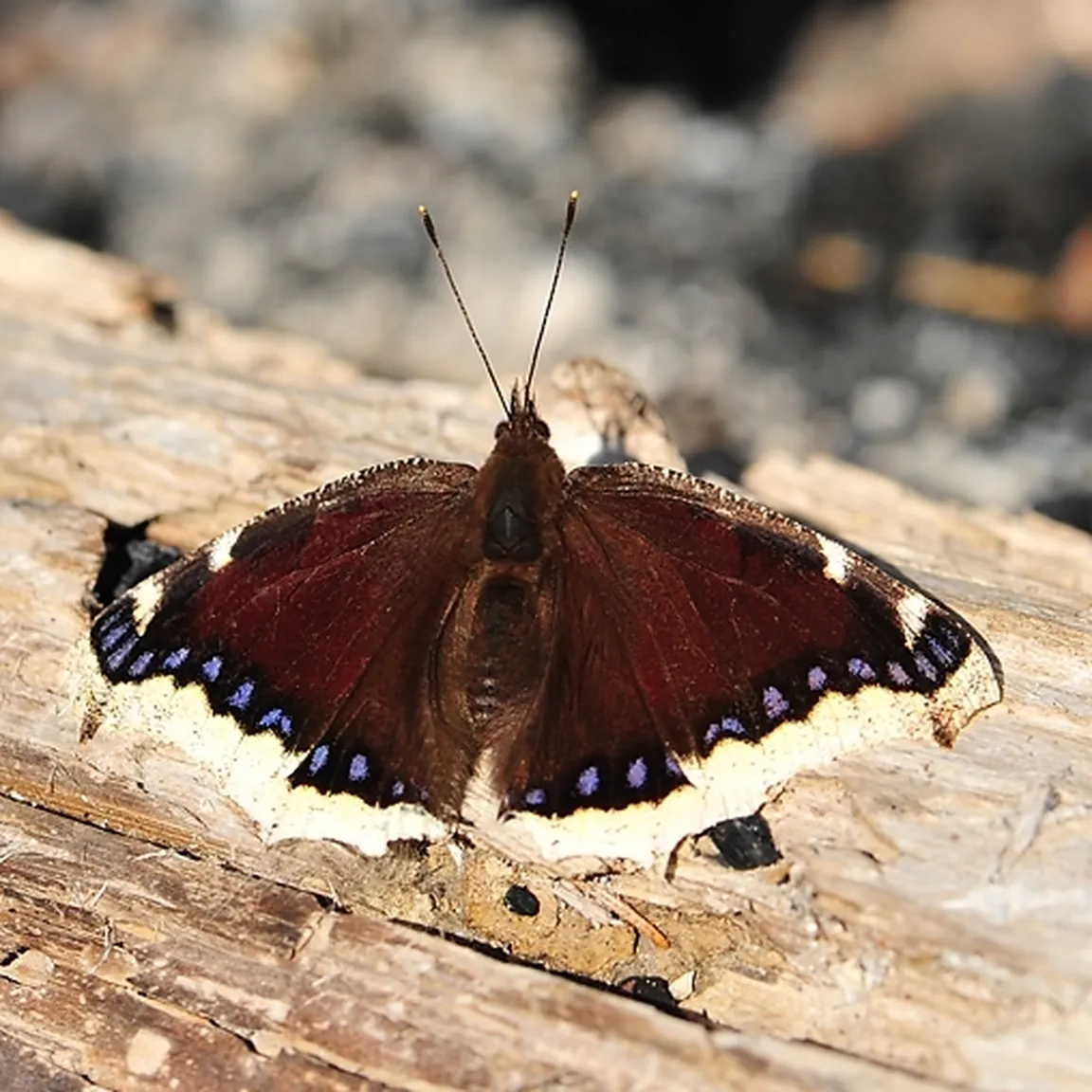Wingspan: 55–65 mm
Flight period of butterflies: in one generation from June to July; adult butterflies overwinter and the following year fly from March to June
Larval food plants: species from the willow genus (Salix), birch (Betula) and poplar (Populus)
The Mourning cloak (Nymphalis antiopa) is one of our largest, and, despite its restrained colours, among the most beautiful butterflies. It has a dark brown body and the upper side of the wings. Along the outer edge of the wings runs a broad yellow band, just beside it are arranged sky-blue spots. The yellowish band fades with age and becomes white in individuals that overwinter. A narrow white marbled pattern on the outer edge of the forewings is interrupted by two angular yellowish bands at the outer corner of the wings. On the underside, the Mourning cloak is, with the exception of the broad pale margin, distinctly dark. Only up close do we notice that the velvety brown color is interrupted by a pattern of irregular black lines. The female and the male are equally coloured.
The Mourning cloak is a species of deciduous and mixed forests that spends most of its life in the canopies of deciduous trees. It rarely visits flowers, but you will most often observe it while drinking water rich in dissolved minerals on damp ground by a stream or on a gravel forest road. It is a strong flyer with a powerful migratory drive, which typically disperses soon after it emerges from its chrysalis. When it finds a suitable space, a territorial male carefully drives away all intruders from its territory.
It is widespread throughout Slovenia and, in our country, due to the abundance of richly structured deciduous forests and good mobility, it is not threatened, although we rarely see it because it lives in the canopy. It occurs mainly in the mid-mountain region, and you can also encounter it below 300 m or above 1000 m above sea level.


